- At Brookline College Tempe, we train students in the skills that today�s employers want to see. In this way, we help prepare them to compete for entry-level positions in their career fields after they graduate. The campus offers a variety of the fastest growing Healthcare programs available and Criminal Justice. The programs include Criminal Justice, Dental Assistant, Medical Assistant, Medical Insurance Billing & Coding, Patient Care Technician, Pharmacy Technician, Phlebotomy Technician and Surgical Technology. For more information about our graduation rates, the median debt of students who completed the program, and other important information, please visit our website at, http://brooklinecollege.edu/ge-disclosures/
School Highlights
Brookline College-Tempe serves 421 students (100% of students are full-time).
The college's student:teacher ratio of 13:1 is lower than the state community college average of 23:1.
Minority enrollment is 81% of the student body (majority Hispanic), which is more than the state average of 61%.
Quick Stats (2025)
- Enrollment: 421 students
- Student:teacher ratio: 13:1
- Minority enrollment: 81%
- Source: Integrated Postsecondary Education Data System (IPEDS)
Top Rankings
Brookline College-Tempe ranks among the top 20% of public schools in Arizona for:
Category
Attribute
Diversity
School Overview
The teacher population of 32 teachers has stayed relatively flat over five years.
Brookline College-Tempe
(AZ) Community College Avg.
Carnegie Classification
Special Focus Two-Year: Other Fields
Baccalaureate / Associates Colleges
Institution Level
Four or more years
At least 2 but less than 4 years
Institution Control
Private for-profit
Private, for profit
Total Faculty
32 staff
296 staff

Number of Programs Offered
8
17
Student Body
The student population of Brookline College-Tempe has declined by 11% over five years.
The student:teacher ratio of 13:1 has decreased from 17:1 over five years.
The Brookline College-Tempe diversity score of 0.78 is more than the state average of 0.71. The school's diversity has stayed relatively flat over five years.
Total Enrollment
421 students
3,009 students
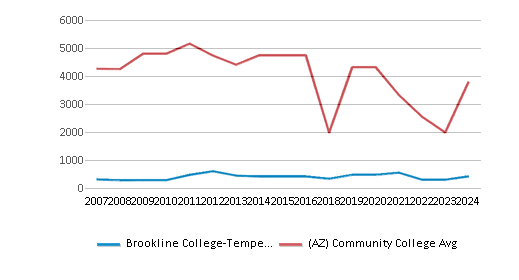
Student : Teacher Ratio
13:1
23:1

# Full-Time Students
421 students
1,238 students
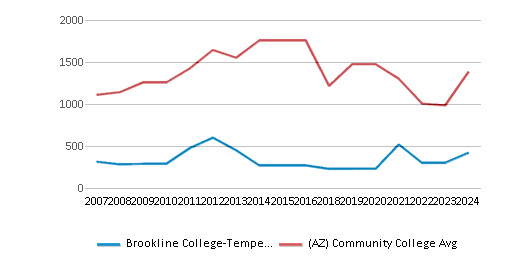
# Part-Time Students
35 students
4,184 students
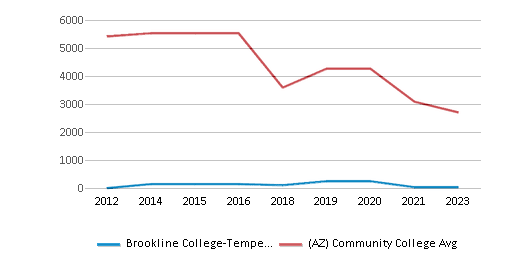
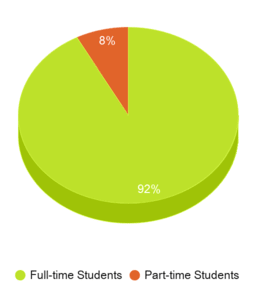
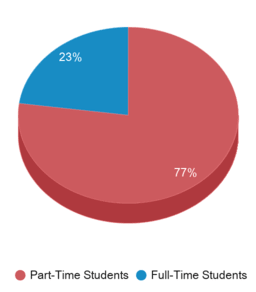
# Enrollment Undergraduate
421 students
339 students
# Full-Time Undergraduate Students
421 students
1,238 students
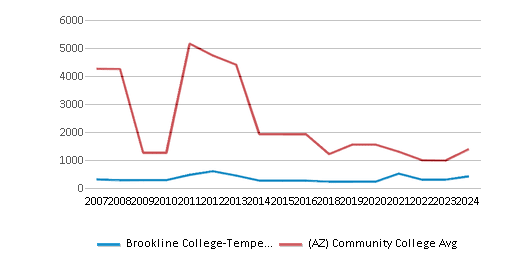
# Full-Time Graduate Students
n/a
66 students
# Part-Time Undergraduate Students
n/a
4,387 students
# Part-Time Graduate Students
n/a
11 students
Total Dormitory Capacity
n/a
250 students
% American Indian/Alaskan
7%
3%
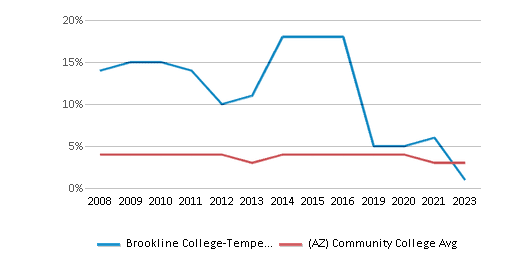
% Asian
2%
4%
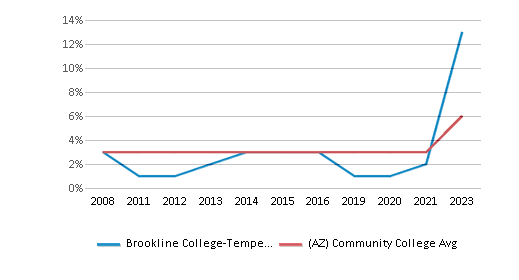
% Hispanic
40%
36%
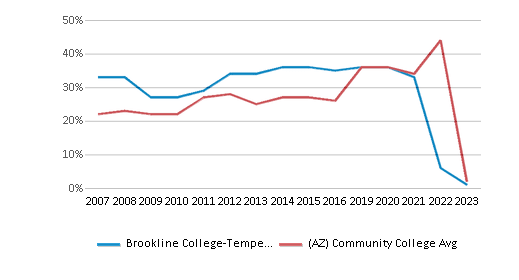
% Black
14%
7%
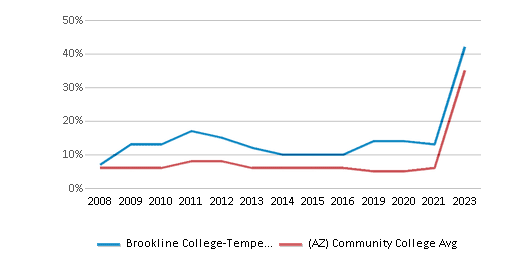
% White
19%
39%
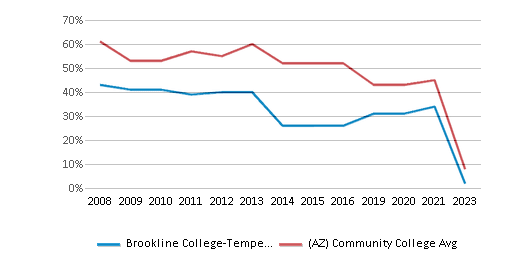
% Hawaiian
n/a
2%
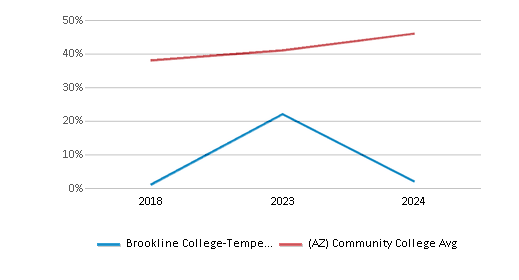
% Two or more races
3%
4%

% Non Resident races
n/a
1%
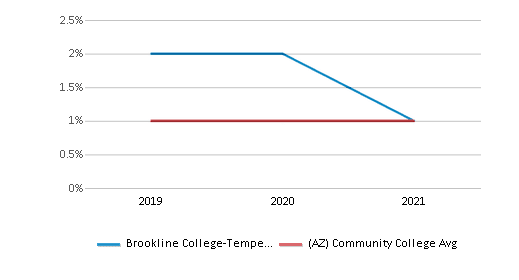
% Unknown races
14%
4%

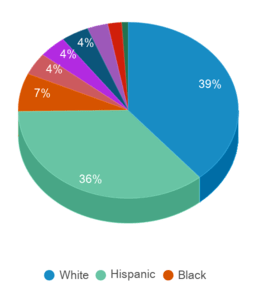
Diversity Score
0.78
0.71
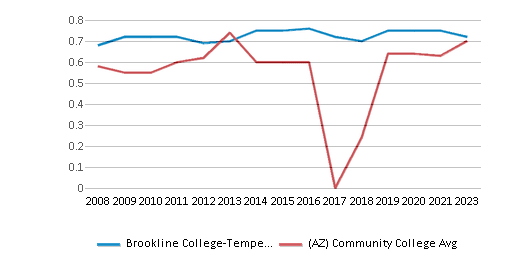
College Completion Rate (Students who graduate in less than 4 years)
0.6085%
0.4914%
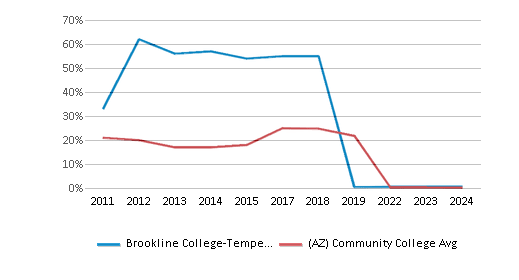
College Completion Rate (Students who graduate in 4 years or more than 4 years)
2.49%
0.6%
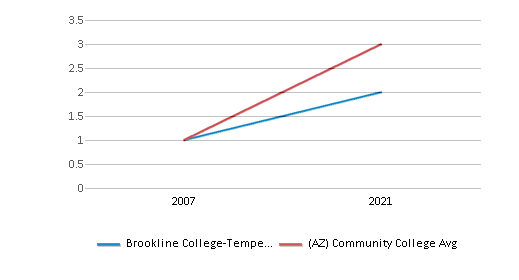
Average Graduate Earnings (10 Years)
$23,600
$32,900
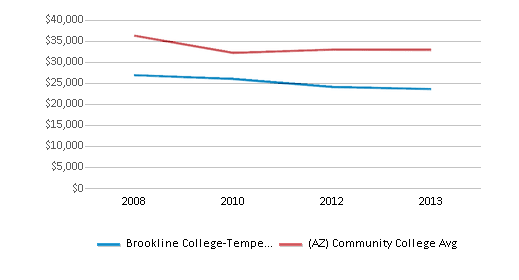
Tuition and Acceptance Rate
% Students Receiving Some Financial Aid
86%
82%
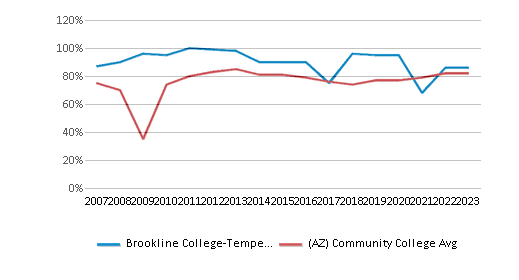
Median Debt for Graduates
$9,500
$9,500
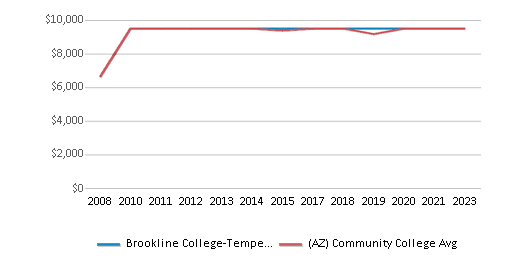
Median Debt for Dropouts
$4,750
$4,750
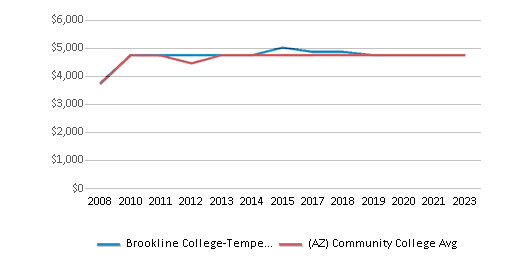
Acceptance Rate
n/a
100%
Source: 2024 (or latest year available) Integrated Postsecondary Education Data System (IPEDS)
School Notes
- International Institute of the Americas (IIA) was originally incorporated and licensed in Arizona on October 18, 1979 as Arizona Institute of Business and Technology (AIBT), a non-profit business and technical school. On April 23, 1999, AIBT was awarded Junior College status and received approval to offer the Associate of Arts (AA) degree at all campus locations. In 2001, the International Institute of the Americas, then AIBT, was awarded Senior College status and received approval to offer degrees at the Baccalaureate level (BA). In 2002, Arizona Institute of Business and Technology became International Institute of Americas (IIA). IIA's Phoenix Campus, the main facility, is located at 43rd Avenue and Bethany Home Road and has been at that site since 1985. The West Valley branch opened in 1988 and moved to its current location in 1993. The Mesa branch opened in 1990. The Tucson branch opened in 1995 and relocated to its current address in 2001. In 2002, a fourth branch was opened in Albuquerque, New Mexico. Diploma programs offered at International Institute Of The Americas includes Automated Accounting, Business Technology, Clinical Technician, Computer Technology, Detention & Security, Medical Assistant and Patient Care Technician. Associate Programs includes Accounting, Business Technology, Clinical Technician, Medical Assistant, Patient Care Technician, Justice Administration, Legal Assisting, Microcomputer Network and Nursing. Bachelor Program is offered in Management. International Institute of the Americas (IIA) is a Senior College accredited by the Accrediting Council for Independent Colleges and Schools (ACICS) to award Certificates, Diplomas, Associate of Arts, and Bachelor of Arts Degrees.
Frequently Asked Questions
What is Brookline College-Tempe's ranking?
Brookline College-Tempe ranks among the top 20% of community college in Arizona for: Diversity in US community colleges.
Recent Articles

Obtaining Your Bachelor's Degree at a Community College
Explore the evolving landscape of community colleges offering bachelor's degrees, addressing affordability, accessibility, and workforce needs.

A to Z of Community College Certificates and Courses
From business and healthcare to technology and skilled trades, the article showcases the breadth of options available to students seeking to enhance their knowledge, develop new skills, or pursue career advancement.

What is a Community College?
This comprehensive guide explains what a community college is, its history, and its role in higher education. It covers the types of programs offered, differences from four-year colleges, benefits of attending, and important considerations for prospective students, providing valuable insights for those exploring educational options.





